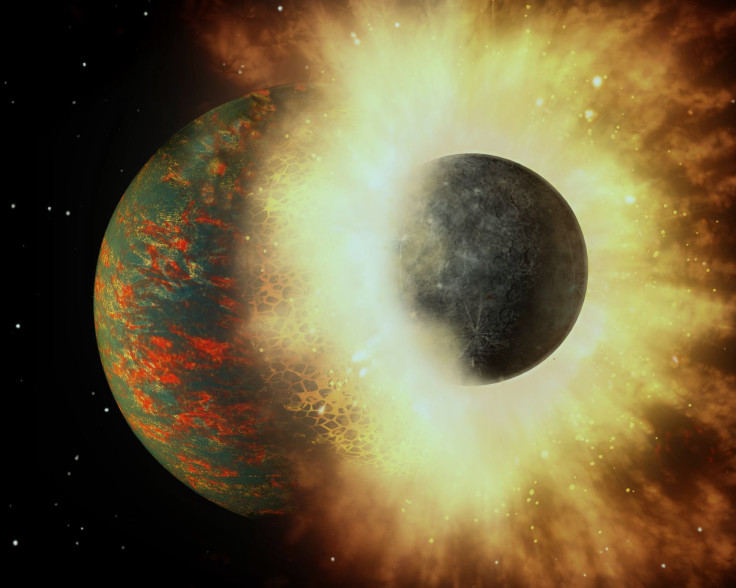Earth’s Carbon May Have Come From Collision With Mercury-Like Protoplanet 4.4 Billion Years Ago

All Life — that we know of — is carbon-based. As we can see from the abundance of life on Earth, carbon forms the backbone of all living things, providing a flexible scaffolding that allows organisms to form, evolve and diversify.
There is, however, a conundrum scientists face while trying to explain the origin of this carbon on our planet. Given that carbon is a volatile element — one that has a low boiling point — it should have either boiled away into space during Earth’s hot formative years, or become locked in the planet’s core, attracted by iron-rich alloys there that have a strong affinity for carbon.
How, in such circumstances, did carbon-based life arise on Earth?
The answer, according to a new study, may be that all life on Earth bears within it an element of extraterrestrial provenance.
“One popular idea has been that volatile elements like carbon, sulfur, nitrogen and hydrogen were added after Earth’s core finished forming. Any of those elements that fell to Earth in meteorites and comets more than about 100 million years after the solar system formed could have avoided the intense heat of the magma ocean that covered Earth up to that point,” Yuan Li, a postdoctoral researcher at Rice University in Texas, and the lead author of the study published in the journal Nature Geoscience, said in a statement. “The problem with that idea is that while it can account for the abundance of many of these elements, there are no known meteorites that would produce the ratio of volatile elements in the silicate portion of our planet.”
The study, which extends this popular “Late Veneer Hypothesis” further, argues that carbon and other volatile elements may have been brought here by a Mercury-like protoplanet that collided with Earth after it had cooled down. This as-of-yet hypothetical collision — which the researchers say took place roughly 4.4 billion years ago — between Earth and a planet with a silicon or sulfur-rich core, could explain the current distribution of carbon in Earth’s mantle.

“Because it’s a massive body, the dynamics could work in a way that the core of that planet would go directly to the core of our planet, and the carbon-rich mantle would mix with Earth’s mantle,” co-author Rajdeep Dasgupta, also from Rice University, said in the statement. “Much more work will need to be done to reconcile all of the volatile elements, but at least in terms of the carbon-sulfur abundances and the carbon-sulfur ratio, we find this scenario could explain Earth’s present carbon and sulfur budgets.”
© Copyright IBTimes 2024. All rights reserved.






















